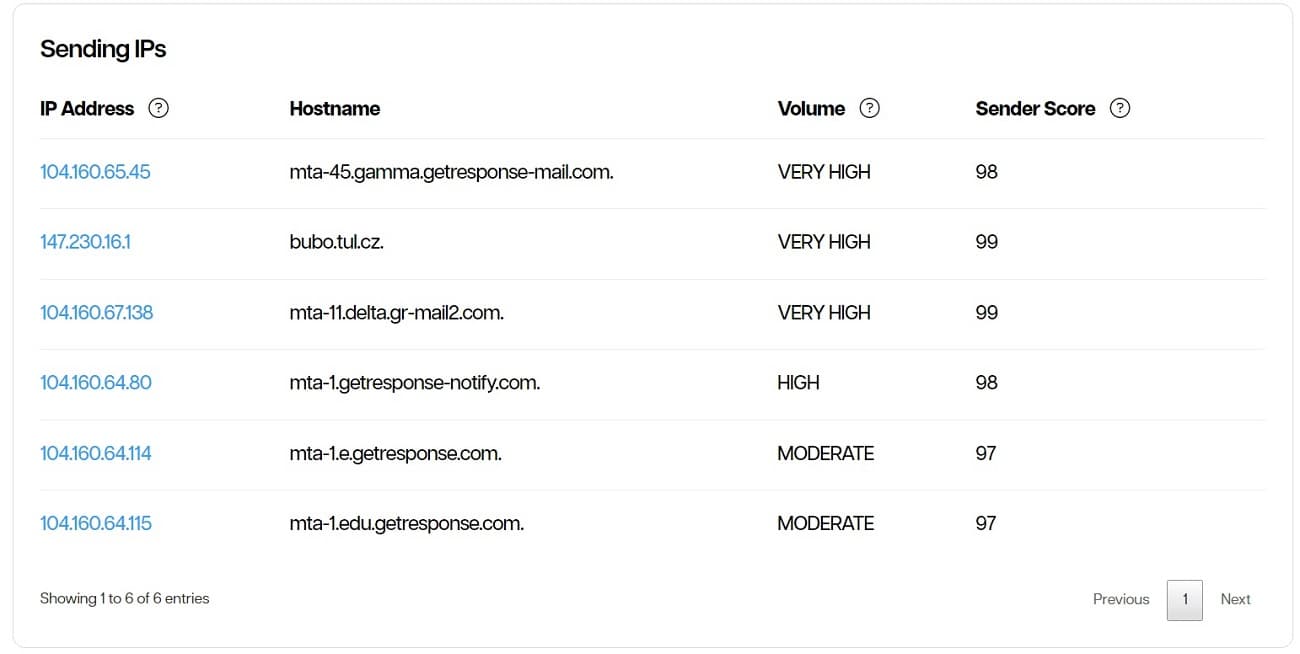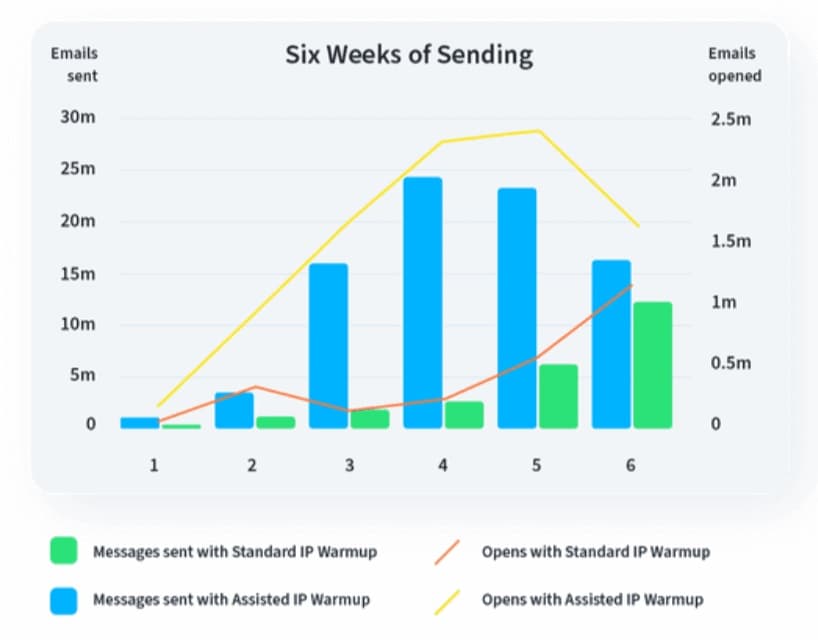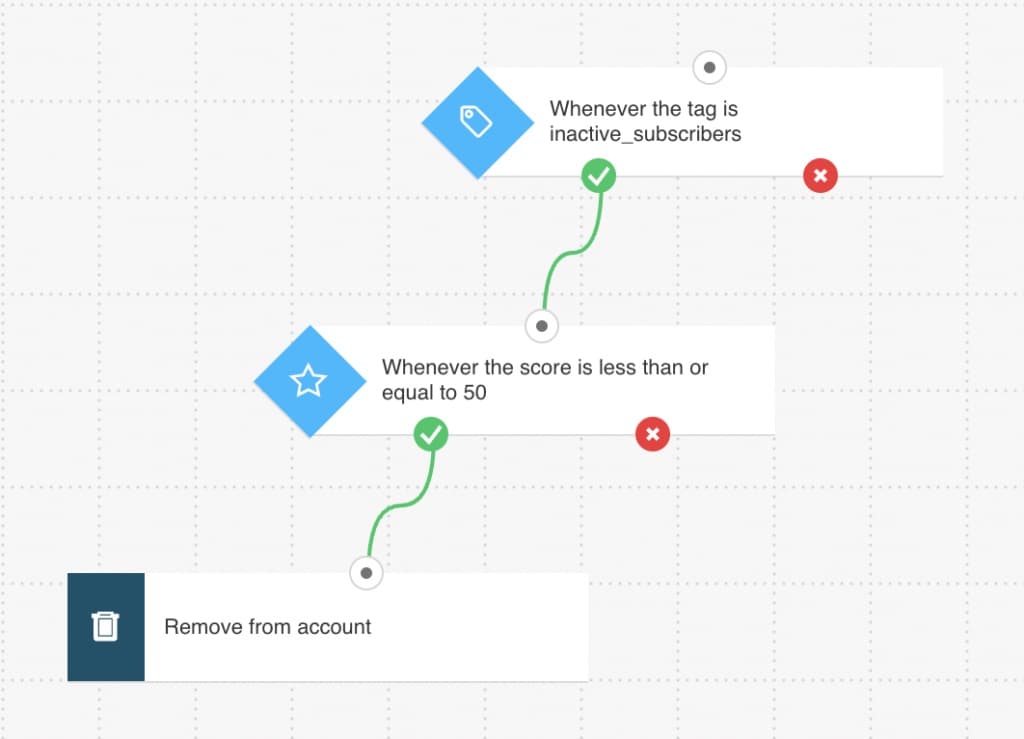Your email sender reputation reflects your company’s professional reputation. If customers find you easy to work with, you’ll succeed and build a good name for yourself. However, if you cause problems for them, you’ll likely ruin your credibility and, ultimately, your business.
The same is true for your sender reputation, which is based on your email-sending activity.
Internet Service Providers (ISPs) have strong restrictions that determine which emails to deliver to subscribers’ inboxes to give users the best experience possible and cut down on fraud and phishing attacks.
For example, Validity’s Email Delivery Benchmark 2023 report shares that Yahoo and Gmail increased blocking and strengthened their filtering algorithms in 2022. And as we’ve learned from their recent announcement, there’ll be more changes, particularly with regard to email authentication requirements, coming in February 2024.
As a result, it’s much easier to damage your reputation than build a good one with ISPs. And how these providers view your domain determines what happens to your emails after you click “send.”
With that in mind, we’ll look into what sender reputation is, what affects it, and how to improve your standing to boost your email deliverability rates.
What is email sender reputation?
Email sender reputation is a numerical score (typically out of 100) an ISP assigns to a company that sends emails.
The higher the score, the more likely the provider will deliver your emails to inboxes. If your score falls below certain levels, it may consider you a spammer and route your emails to the spam folder.
Here’s an example of GetResponse’s deliverability scores from Sender Score:

Our Compliance Team keeps only good senders in our system and reserves the right to disable accounts that violate our Anti-Spam Policy. This eventually earns us a positive reputation with ISPs. On top of that, our Deliverability Team tracks blocklists and bounce reasons to ensure our IPs perform well.
You can leverage this good reputation to keep your email deliverability rates high.
Domain reputation vs. IP reputation
Domain reputation is a score an email service provider (ESP) generates based on how recipients have previously engaged with your email domain. ESPs use this score — and other factors, like email content — to decide whether to place your email in the primary inbox or spam folder.
In contrast, IP reputation is linked to the server that sends your emails and can change regularly. The service provider typically determines the sending IP associated with your emails. For GetResponse MAX, it would be a shared or dedicated IP.
GetResponse MAX allows you to create dedicated IPs that further improve your email deliverability. That’s because you have complete control over your sender reputation and can track it directly. As a result, other people’s email activity won’t affect your sender reputation, unlike shared IPs.
In short, domain reputation is unique to your domain and business, while IP reputation is linked to the mail server.
Why is sender reputation important?
Validity’s report shares that around 15% of emails either landed in the spam folder or were blocked by the receiving mailbox provider (MBP).
High deliverability is crucial for high-sending marketers and those migrating to new platforms. A good sender reputation will increase the chances of your emails reaching inboxes.
However, if you don’t follow email marketing best practices, you may lose your reputation — and lower your deliverability rate.
A good email reputation also protects against fraud and cybercrime. According to the Federal Bureau of Investigation (FBI), phishing attacks affected over 300,000 victims in 2022 — resulting in losses of over $52 million.
ESPs use companies’ sender reputations to identify and curb cybercriminals, who hide under successful brand names to trick recipients into giving out personal information, like passwords or card numbers.
Learn what affects your email deliverability, too, on our marketing podcast:
What affects your email sender reputation?
Think of your sender reputation like a credit score. It grows over time and shows how well emails sent from your domain name perform. You may also have an excellent sender history, but a few bad campaigns can ruin your reputation.
Let’s look at what can affect your sender reputation:
1. Spam traps
Spam traps are email accounts set up by ISPs and blocklist operators to identify businesses that don’t follow email best practices. In other words, they’re tools used to find and punish careless marketers and spammers.
There are three types of spam traps:
- Pristine spam traps (Honey Pots) — Email addresses that an actual person has never used. They’re hidden in website code to identify senders who buy contact lists or scrape websites to find addresses.
- Recycled spam traps — Addresses that are either abandoned or invalid (such as work addresses for former employees) and have been recycled by ISPs or ESPs. Before being used as traps, these addresses typically go through a “cooling-off” period where any email sent to them bounces back. After this period, any emails received are
- Typo traps: These are email addresses that are intentionally misspelled versions of common domains. For instance, “exmple.com” instead of “example.com”. These addresses might catch senders who make errors when collecting or entering email addresses.
What happens when you send an email to a spam trap?
It may result in an immediate block for your domain or IP address. As a result, your sender reputation will suffer, causing high bounce rates and lower deliverability.
In a worst-case scenario, if you hit a spam trap run by one of the major ISPs, like Gmail or Yahoo, it may permanently blocklist your domain.
2. Spam complaint rates
The spam complaint rate is the percentage of users reporting your emails as spam.
For instance, if you send 4,000 messages and 4 people consider the emails spammy, your spam rate will be 0.1% (4/4,000 x 100).
Our 2024 Email Marketing Benchmarks report shows the average spam complaint rate was below 0.01%. This indicates that most businesses use email marketing strategies like enabling single or double opt-ins and making the unsubscribe link easily accessible.
3. Engagement rates
The engagement rate is the number of email subscribers who took some action on your email. It considers opens, clicks, and the frequency of replies.
Our 2024 report shows the average open, click-through, and click-to-open rates were 39.64%, 3.25%, and 8.62%, respectively.
The best way to increase these metrics is to offer personalized and relevant content that solves subscribers’ pain points.
4. Bounce rates
The bounce rate is the percentage of emails that aren’t delivered to recipients’ inboxes. Our report shows the average bounce rate is 2.33%.
Email bounces are classified into two types:
- Hard bounce: This permanent rejection may occur when the address doesn’t exist or is invalid.
- Soft bounce: Your email reaches the subscriber’s inbox but bounces back (possibly because their inbox is full). Future emails may reach the inbox.
Although you should strive to avoid high bounce rates, it’s virtually impossible to have zero bounces. Some factors that cause bounces are out of your control.
5. Unsubscribe rates
The unsubscribe rate is the percentage of users that opt out of your email marketing campaigns.
Our 2024 report shows the average unsubscribe rate is 0.15%. Above-average rates indicate your recipients don’t find value in your emails.
You may want to segment your audience better and target them with personalized emails offering quality content. That way, you’ll engage them more, build trust, and reduce unsubscribes.
GetResponse MAX provides an “exit survey” when people opt out of your emails. This helps you see how to improve your campaigns and engage subscribers.
How to check your email reputation
1. Use email reputation checker tools.
2. Track your email reports to identify your sender reputation patterns.
3. Check if your domain or IP address is on a deny list.
1. Use email reputation checker tools

The most convenient way to check your email reputation is to use online tools. They use algorithms and data sources to score your company’s sending reputation. It’s a good idea to use several tools and compare the results.
You should also combine the scores with other data points to pinpoint any issues that may cause a poor sender reputation.
That said, the tools you can use to determine your email sender reputation include:
2. Track your email reports to identify your sender reputation patterns

Another way to check your sender reputation is to track your email marketing reports on your GetResponse MAX dashboard. If your open and click-through rates (CTRs) dip and recipients mark more emails as spam, your sender reputation score may suffer.
High engagement rates mean your email reputation is good and more emails end up in users’ inboxes.
3. Check if your domain or IP address is on a deny list

A deny list is a group of domains or IP addresses identified as sending unsolicited emails.
Your domain or IP may end up on a deny list if recipients mark your emails as spam or you send messages to spam traps. When this happens, your sender reputation may be affected.
Some popular deny lists include:
Here are some actions you can take to avoid ending up on deny lists:
- Send confirmation emails before adding subscribers to your active mailing lists.
- Remove inactive contacts from your lists.
How to improve your sender reputation and increase email deliverability
As mentioned, a high reputation score means ISPs are more likely to accept your marketing emails and ensure they arrive in inboxes.
Here are three ways to improve your reputation and, eventually, email deliverability:
1. Warm up your IP address
IP warmup is a process where an IP earns its reputation by gradually increasing the volume of emails it’s sending. When ISPs see you send permission-based and relevant emails, they can trust you to send bulk emails to recipients’ inboxes.
If you keep up with email marketing best practices, your reputation should be good, leading to improved email deliverability.
Some characteristics of a successful warmup include:
- Engagement: Send emails to the most active subscribers first. They are more likely to engage with your messages.
- Patience: Go slowly, following your plan.
- Consistency: Don’t suddenly change the volume of your email sends.
GetResponse MAX’s flexible suite of advanced marketing tools includes Assisted IP Warmup, so you don’t have to use a separate platform.
We’ll set your send volume threshold and automatically increase it as your reputation improves. If you need to send more emails than your current threshold, we’ll deploy the extra messages with our shared IPs.
This feature helps you avoid slow list migration and delays in reaching your customer base.

According to a GetResponse MAX high-volume sender data, an Assisted IP Warmup significantly outperforms its standard counterpart. After just 4 weeks of sending emails, our client saw more than 4X the opens they would have gotten with a standard IP warmup.
2. Review and clean your email lists to avoid spam traps
There are a few ways you clean your email list.
You can use one of many email verification tools and have them check which emails are valid. This is often done before you import contacts into your email marketing platform. It can be very helpful if you’re list is growing very fast and you’re seeing high bounce rates or if you’re working in the B2B space, where people often change jobs and email addresses.
You can also track your opens and CTRs to identify recipients who don’t interact with your emails. A useful feature for that is the Engagement Score which automatically evaluates your contacts’ engagement. Once you’ve identified unengaged contacts, you can try re-engaging them, and if that fails, remove them from your subscriber list.
Alternatively, you can use GetResponse MAX to clean your lists with tags and scores. Set up a scoring system to rate customers based on their actions, such as clicking on a link, and tag them for removal when their score drops below a certain threshold.

In addition, never buy an email list. Most likely, these addresses were gathered without the permission of their owners and are outdated.
Not to mention, you’ll be breaking email laws like the Controlling the Assault of Non-Solicited Pornography And Marketing (CAN-SPAM) Act and General Data Protection Regulation (GDPR). Violating either law can result in hefty fines.
To help you comply with these laws, GetResponse MAX automatically removes addresses that have unsubscribed, bounced too many times, or opted out from your emails from our database.
To learn more about this, read our guide to email list management best practices.
3. Authenticate your email domain
Authenticating your email with DKIM (DomainKeys Identified Mail) and SPF (Sender Policy Framework) proves to ISPs that you’re who you say you are and are worthy of emailing their clients.
It also protects your domain from spoofing (someone gaining control of your sending domain).
GetResponse MAX helps you send emails that comply with all DMARC (Domain-based Message Authentication, Reporting, and Conformance) policies. You can even authenticate your domain from your GetResponse MAX account.
Starting in February 2024, it’ll become a requirement that all bulk senders who want to reach Gmail and Yahoo users will have their email domain verified with DKIM and DMARC.
Final thoughts: How to check and improve your email sender reputation
As a marketing team, you can maintain a good sender reputation by following email best practices — from personalized content to proper list-building strategies.
However, all your efforts may be fruitless unless you use a reputable ESP for your email campaigns.
If you’re looking for an ESP with a responsive Data Compliance Team, a knowledgeable Email Deliverability Team, and a 99% deliverability rate, check out GetResponse MAX.
